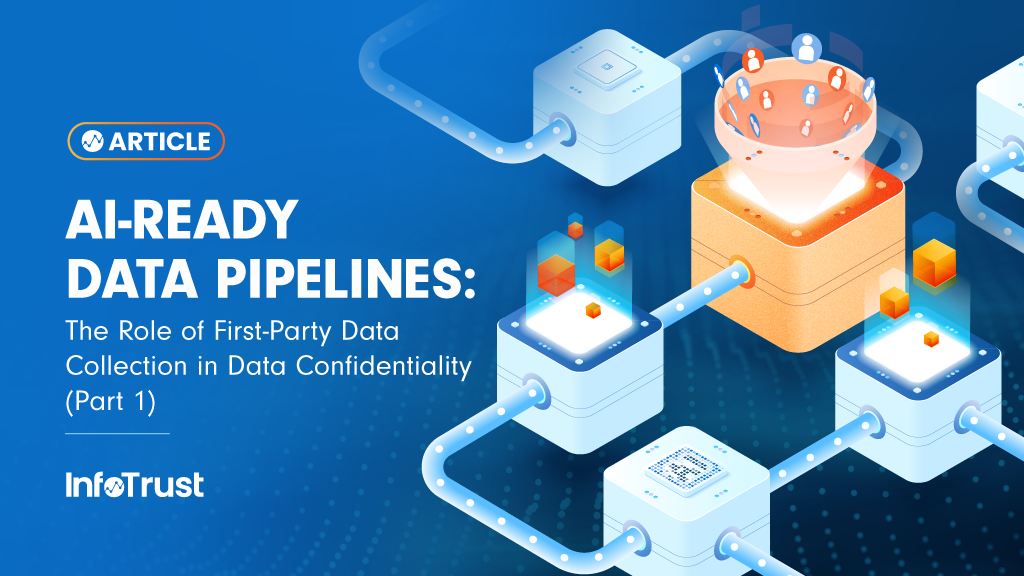Whether you are turning data into magic in-house, or relying on third parties for all the oohs and aahs that set you apart from the competition, owning your data pipelines is a necessary first step towards reliability, accountability, and availability. To guarantee that everything sings smoothly downstream, you need a level of data durability that only first-party data collection can provide as you navigate the tricky waters of legislation, consent, and good old-fashioned human error, so let’s look at the features that a proprietary collector enables and how they apply to a modern data pipeline.
Building Trust Through First-Party Data Collection
When it comes to collecting data, establishing a relationship of trust with your customers is key—the more they feel safe in your hands, the more open they will be to your services and the less likely they will be to use incognito mode, advertisement blockers, and clean up their cookies. Getting to know people is a two-way relationship, and the more confidence people have in how you handle that information, the better the data you will have to work with. Having your data collector, collecting data under your domain, transmits that message of confidence as it makes it understood that you are making a best effort to make sure any communication between you and them is confidential and protected from prying eyes. Additionally, it is no secret that privacy software specifically targets cookies and deals with them differently depending on how they are set, so being able to handle them using your collector will give you the best chance to persist that information for longer, rendering your data more rich and reliable for a more extended period. Cookies set via JavaScript can’t be considered reliable anymore. Not to mention that persisting information from a back-end service makes it easier to keep a consistent strategy across the board as opposed to having to maintain different mechanisms on websites, native apps, IoT devices, etc.
Optimizing Latency for Seamless User Experiences
Latency is another important part of providing your customers with the best user experience you can. Real-time services such as personalization, fraud detection, or experimentation require bi-directional communication to act with timeliness and deliver a seamless, natural, and effective interaction. In that sense, being able to tailor data collection responses to the context of each action is vital to make your magic feel like, well, magic, so that level of control is something you just can’t compromise on. This also means that, while it’s tempting to treat your data early on, the collector should be kept lean and fast and delegate any heavy processing to an actor further down the pipeline to avoid any unnecessary delays.
The Importance of Geographical Location and Legal Compliance
The geographical location of your collector, therefore, is going to be a critical decision that will be influenced by technical, practical, and legal considerations. Proximity to each of your individual users is one thing, but privacy legislation and governance organization may also influence how you architect your infrastructure. When it comes to user privacy, it is always best to err on the side of caution and, when in doubt, follow the most restrictive rules to make sure you don’t accidentally end up in a very unpleasant pickle. Paying a fine can be painful, but add to that the loss of trust of your user base and the impact that has on your data and suddenly the cost is a lot more difficult to digest. And do remember that if people have short memories, privacy software does not. Additionally, it is important to limit who may have access to which configuration and therefore avoid issues which may affect data filtering or routing. Accidents are inevitable, but how much damage they do and how quickly they are fixed is up to you, and a good strategy combining geographical distribution and access control will determine how you control the effects of unfortunate events.
Setting the Stage for a Modern Data Strategy: What’s Next?
Owning the first step of your data pipeline is a solid foundation for a mature and modern data strategy and sets you up to keep your data consumers healthy and happy. Join us in part two to discuss data specialization without creating data silos, and in part three to ensure that your data is the best data you can have.


